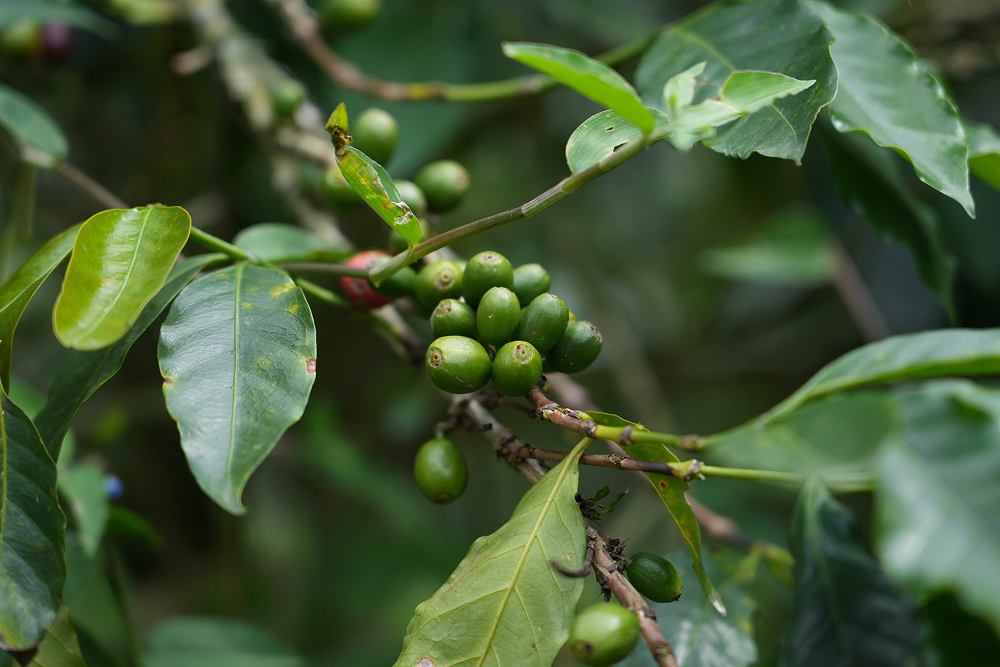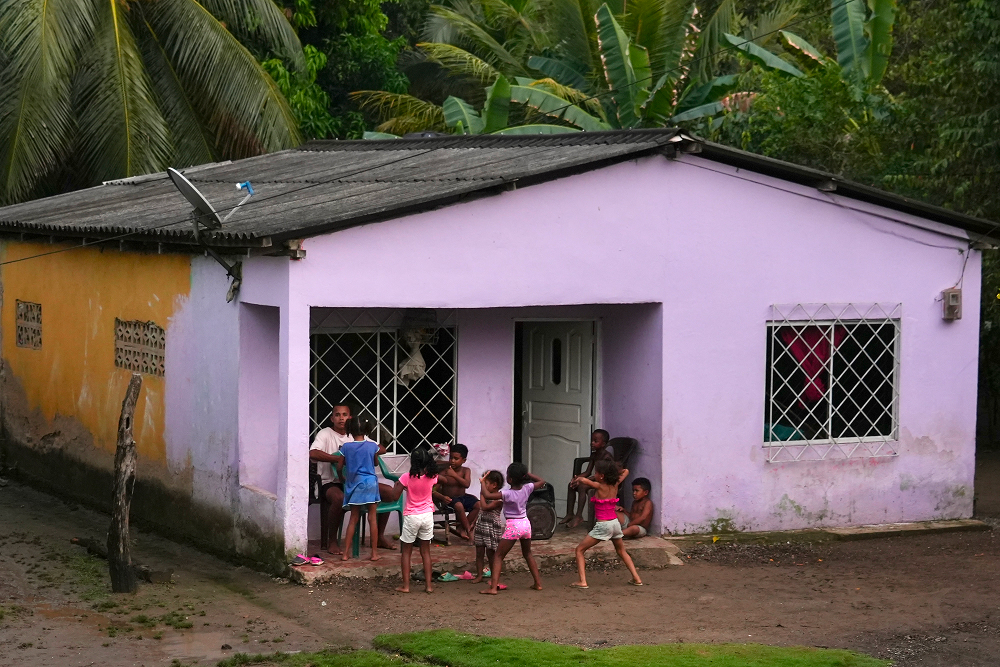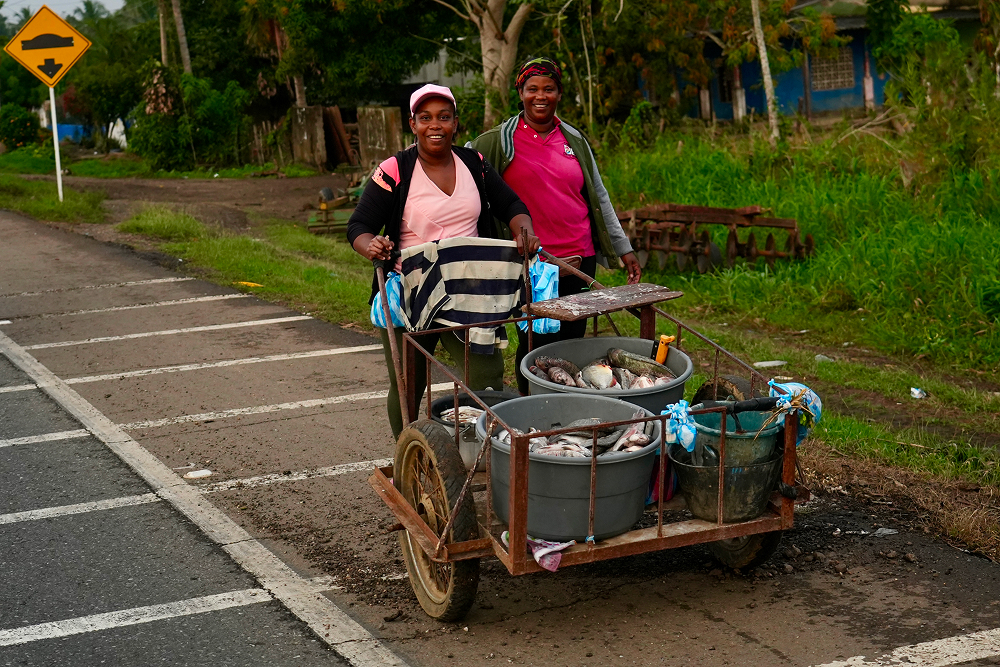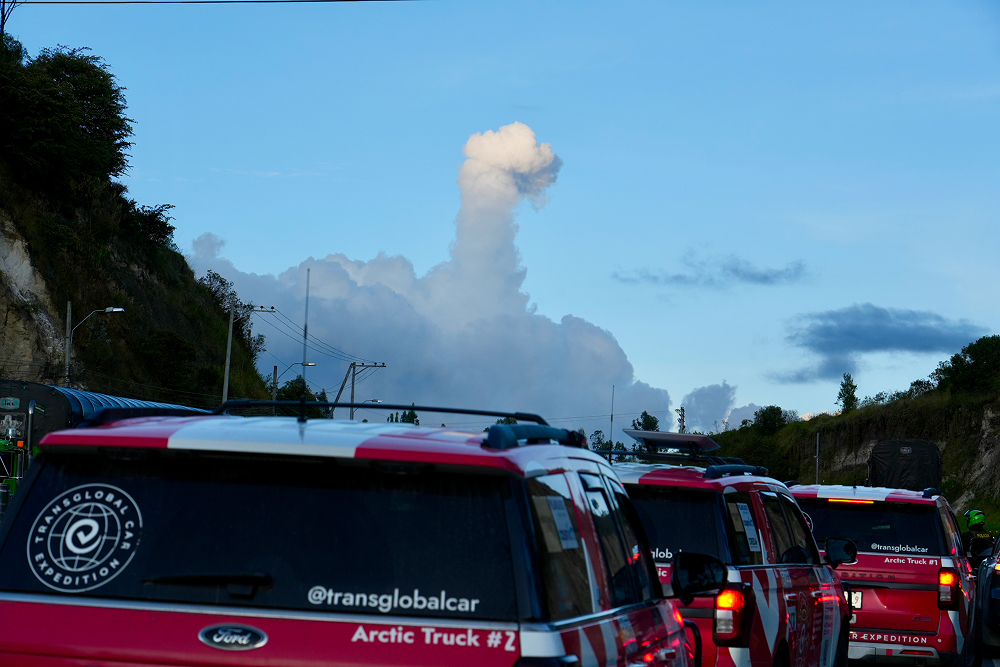On day 413, we bid farewell to Ecuador, but not before visiting the equator crossing point— the Kiwitato Sundial, known as the Middle of the World. We crossed the equator, a unique achievement for a road expedition. Now, we set our sights on the border. Ecuador left an indelible impression on us: well-maintained roads, towering mountains, active volcanoes, and lush, evergreen tropical forests.
We entered Colombia and headed toward the city of Pasto, not far from Galeras Volcano. We covered a distance of 352 km.
Day 414 marked our first full day in Colombia, with our final destination being the city of Popayán. We spent the day navigating mountain serpentine roads, accompanied by stunning views of canyons and mountains.
We drove a total of 257 km for the day.
On day 415, we journeyed to Medellín, the industrial capital of Colombia, founded in 1616. The city is known by several nicknames: “City of Eternal Spring,” “Capital of the Mountains,” “City of Flowers,” “Orchid Capital,” “Beautiful Village,” and “Silver Cup.” En route, we visited a coffee plantation. The last three hours to Medellín were driven in darkness.
We traveled 524 km that day.
Day 416. This winter has been challenging for our expedition. Antarctica proved tough, and our route through South America is currently the most difficult of all the continental stages. Today, we need to cover more than 700 km to reach the city of Cartagena in the north of the continent.
There is no direct road connection between South and North America due to the Darién Gap, a stretch of tropical forests and swamps along the Panama-Colombia border, approximately 100 km long. It represents the only break in the famous Pan-American Highway. The challenging landscape, covered in dense jungles, mountains, swamps, and rivers, makes road construction not only extremely difficult but nearly impossible. The Darién Gap is one of the most biodiverse regions on the planet; building roads here could lead to the destruction of its unique ecosystem and the extinction of rare plant and animal species.
As a result, we faced another logistical challenge: the vehicles from Cartagena will be shipped by ferry to Colón, Panama, while our team will fly from Cartagena to meet them there. The ferry departs earlier than we initially planned, so we had to condense the last four days of our journey into two.
Cartagena surprised us with heavy traffic, allowing us to catch glimpses of Medellín’s metro trains and the cable cars, which, much like in La Paz, are a highly popular mode of urban transport. Much of the road to Cartagena followed familiar mountain serpentine paths, with frequent sections of alternating traffic and endless villages bustling with motorcyclists. Between these villages, we passed plantations of bananas, papayas, mangoes, coconut palms, and numerous cattle farms.
We covered a total of 742 km that day.





